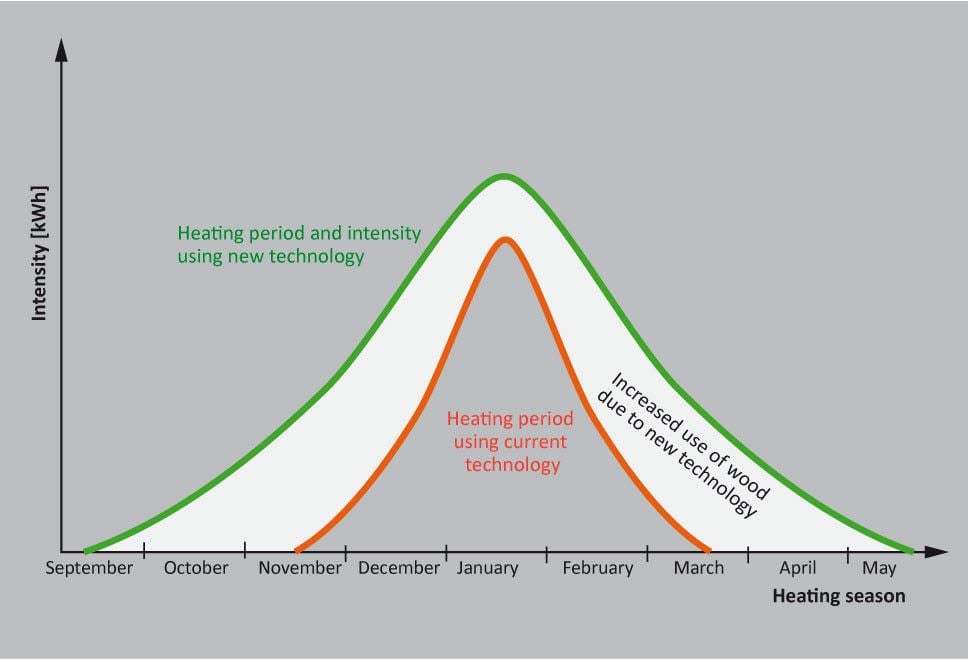
StableWood
Project summary
New houses as well as retrofit/upgrading of old houses have increasingly focused on improved insulation. This will set new demands on the heat source, which should be able to deliver a stable effect down to as low as 1kW.
Through new solutions that will combine heat production, storage and distribution in an optimum way, it will be possible to achieve a substantially more stable heat release and distribution in wooden houses than the current solutions and technologies can offer.

Using wood logs is important as a part of security of supply in Norway where we today rely to a very large extent on the electricity grid to be able to deliver the needed heating for our houses. Today 78% of the houses are heated by electricity and 15-20% by wood logs. Norway has only 1-2% heating of houses by district heating and nearly no heating by gas. This makes Norway quite special compared with other European countries.
Hence, low load wood stoves and fireplaces in new buildings demands new technologies and solutions with an increased focus on the combustion process and its control, the combustion quality and optimum design to ensure low emissions and high energy efficiency. To minimize the negative effects of the batch combustion process (compared to a continuous combustion process) of wood logs in wood stoves and fireplaces, especially if low load and long burning time is the aim, a more stable heat generation and heat release is needed.

This project focus on new solutions and technologies for heating of buildings with low heating demand and specifically batch combustion of wood and the increased need for stable heat release and distribution from wood log combustion.